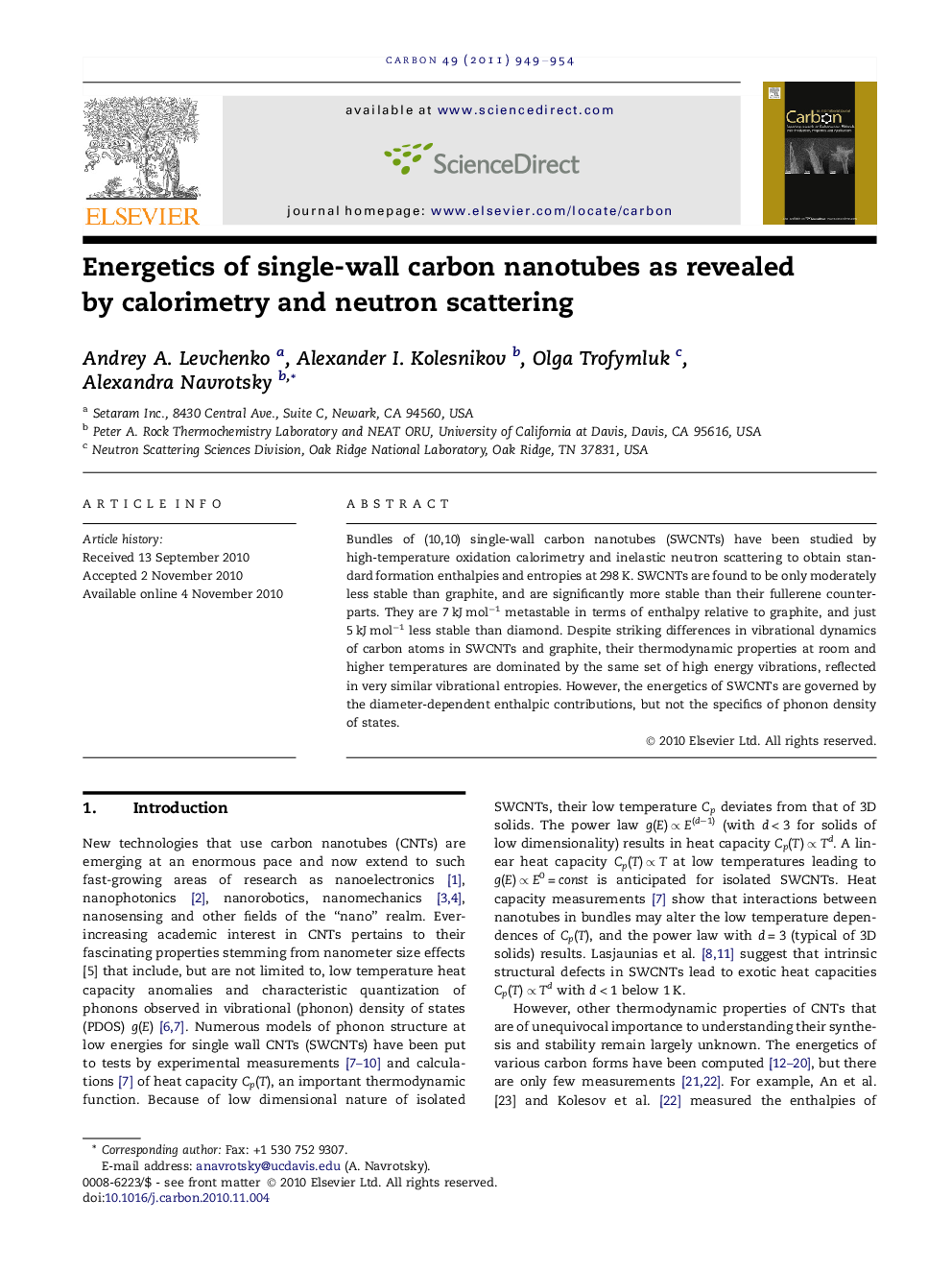| Article ID | Journal | Published Year | Pages | File Type |
|---|---|---|---|---|
| 1416621 | Carbon | 2011 | 6 Pages |
Bundles of (10,10) single-wall carbon nanotubes (SWCNTs) have been studied by high-temperature oxidation calorimetry and inelastic neutron scattering to obtain standard formation enthalpies and entropies at 298 K. SWCNTs are found to be only moderately less stable than graphite, and are significantly more stable than their fullerene counterparts. They are 7 kJ mol−1 metastable in terms of enthalpy relative to graphite, and just 5 kJ mol−1 less stable than diamond. Despite striking differences in vibrational dynamics of carbon atoms in SWCNTs and graphite, their thermodynamic properties at room and higher temperatures are dominated by the same set of high energy vibrations, reflected in very similar vibrational entropies. However, the energetics of SWCNTs are governed by the diameter-dependent enthalpic contributions, but not the specifics of phonon density of states.
Graphical abstractThis study places SWCNTs (red) on the energy landscape for carbon allotropes which include graphite, diamond and fullerenes. The enthalpic contributions control the energetics of SWCNTs, making CNTs 7 kJ mol−1 less stable than graphite. The height of the 3D blocks in the diagram shows experimental errors. The lines and rectangle are theoretical values and their span.Figure optionsDownload full-size imageDownload as PowerPoint slideResearch highlights► Enthalpic factors rather than entropy contributions dominate the energetics of SWCNTs. ► Heat capacity and entropy of SWCNTs are similar to those of graphite above 100 K. ► SWCNTs are 7 kJ mol−1 metastable in enthalpy relative to graphite (5 kJ mol−1 to diamond). ► Direct measurements of SWCNT energetics agree reasonably with theory predictions.
